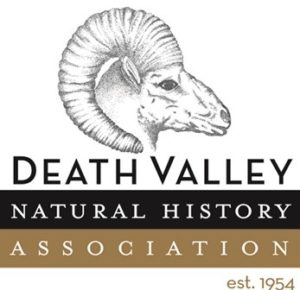Death Valley National Park’s All Taxa Inventory-
The beginning of our understanding and discovery of this complex
and diverse ecosystem.
stands as the largest national park site outside of
The park is significantly larger than the state of
Approximately 97 percent of the park is legally-designated
wilderness. The park, combined with the
surrounding Bureau of Land Management wilderness areas, is the largest expanse
of desert wilderness in
for being the not only the lowest point in North America, but also the driest
and hottest place on the continent.
inhospitable landscape. Certainly, the
extreme environments provide both scientific value and visitor attraction, but
also present is a wide assortment and variety of gradients that produce a rich
and varied biologic diversity. For
example, the park contains over 1,200 species of native plants. In addition, there are many endemic species
of wildlife within the
region. The many environmental gradients
produce diverse natural physical processes as well.
natural and cultural resources, the park contains a wide assortment of
landscape features. The three major
valleys consist of the
There are several dunes in the park, such as Stovepipe Dunes, Panamint
Dunes, Marble Dunes, Ibex Dunes, and the ecologically significant Eureka
Dunes. There are approximately 12
mountain ranges, such as the Panamint, Saline, and
and the Panamint, Owlshead, Cottonwood, Grapevine, Black, and
such as the Ibex Hills,
springs, including major regional springs such as
Travertine, and Grapevine Springs to perennial creeks such as Salt Creek,
and
There are also salt pans and crusts, playas, pools of saline water,
lower/mid/and upper elevation valleys, slopes and plateaus, dunes, mountains,
caves and wetlands.
In such a large and diverse
landscape of extremes, there are occasional anomalies, such as: Salt Creek,
Devils Hole, Cottonball Marsh, Saline Marsh, Saratoga Spring, the mysterious
moving rocks in the racetrack Playa, and the
Springs.
From the 11,049-foot forested
summit of Telescope Peak down to the
and species richness. However, what do
we know of the life contained within this large expanse of desert
wilderness? Not as much as you may
think. To better understand the
complexity of life within these ecosystems, the traditional bird list, bighorn
sheep sight records and snake inventories are insufficient. The richness within this ecosystem is not
necessarily any one particular species, no matter how charismatic, but instead
is the diversity of all life forms and how these species adapt to the various
habitats within the park. Therefore, we
need to know all species within
Valley
(ATBI) is all about.
The All Taxa Biological
Inventory
An ATBI is a complete
inventory of all life forms within a given area, from bugs to bighorns, flatworms
to finches, viruses to vireos, lupines to lizards, microbes to mosquito fish (yes,
we do have non-native plants and animals in the park). Beyond a mere laundry list of critters, there
are many other goals is well. This
intensive study will also aid the park in understanding plant and animal
distribution, associations and ecological relationships as well as relative
abundance. This will also be an
important record of organisms, habitats and conditions that will form a
baseline for future efforts that document potential effects from climate change
or other landscape-scale dynamics and alterations.
Another important aspect is
engaging the public, especially school groups, whether college groups, high
school science classes, or other environmental educational efforts. This engagement is not only to obtain needed
assistance in the inventories, but more importantly, foster a connection and
relevancy with the public and hopefully light a spark in them towards a better
appreciation for the diverse resources known as
1) Document every life form
within
2) Begin our understanding of
habitat relationships and how these "pieces" fit into the overall
ecosystem;
3) Increase our ability to
predict how changing regional and global processes may affect the
4) Conduct and manage this
inventory in a manner that captivates and engages the public, especially
school-age groups, and instill a sense of discovery;
5) Increase science literacy;
and,
6) introduce the diverse
resources of
audiences.
Cooperators (so far):
Valley
Association
Valley
Outdoors Campaign for Kids through Study)
Basin
Studies Unit
Angeles
National Park Service
Interesting Finds
(first three trips):
1)
A new undescribed species of jumping spider;
2)
A new undescribed species of amphipod (a shrimp-like crustacean). This happens to be a blind/cave and
subsurface-adapted aquatic species;
3
A recently discovered ant species that is currently being described;
4)
An ant species representing a new state record; and
5)
A significant range extension for a scorpion species.
